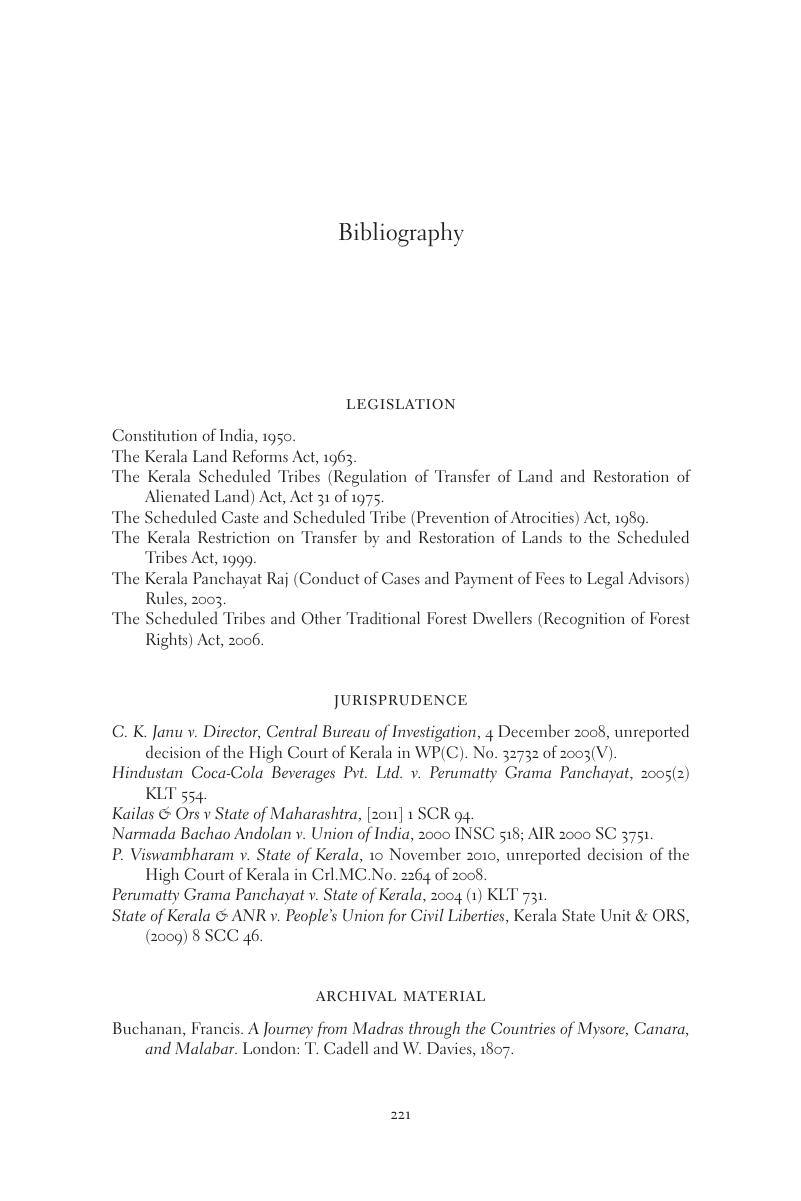Book contents
- Indigeneity and Legal Pluralism in India
- Cambridge Studies in Law and Society
- Indigeneity and Legal Pluralism in India
- Copyright page
- Contents
- Book part
- Glossary
- 1 Introduction
- 2 Locating a Dispute
- 3 A People’s Movement
- 4 Litigants, Lawyers, and the Questions of Law
- 5 Claims and Meanings
- 6 Law, History, Justice
- 7 Conclusion
- Bibliography
- Index
- Series page
- References
Bibliography
Published online by Cambridge University Press: 05 August 2015
- Indigeneity and Legal Pluralism in India
- Cambridge Studies in Law and Society
- Indigeneity and Legal Pluralism in India
- Copyright page
- Contents
- Book part
- Glossary
- 1 Introduction
- 2 Locating a Dispute
- 3 A People’s Movement
- 4 Litigants, Lawyers, and the Questions of Law
- 5 Claims and Meanings
- 6 Law, History, Justice
- 7 Conclusion
- Bibliography
- Index
- Series page
- References
Summary

- Type
- Chapter
- Information
- Indigeneity and Legal Pluralism in IndiaClaims, Histories, Meanings, pp. 221 - 234Publisher: Cambridge University PressPrint publication year: 2015



